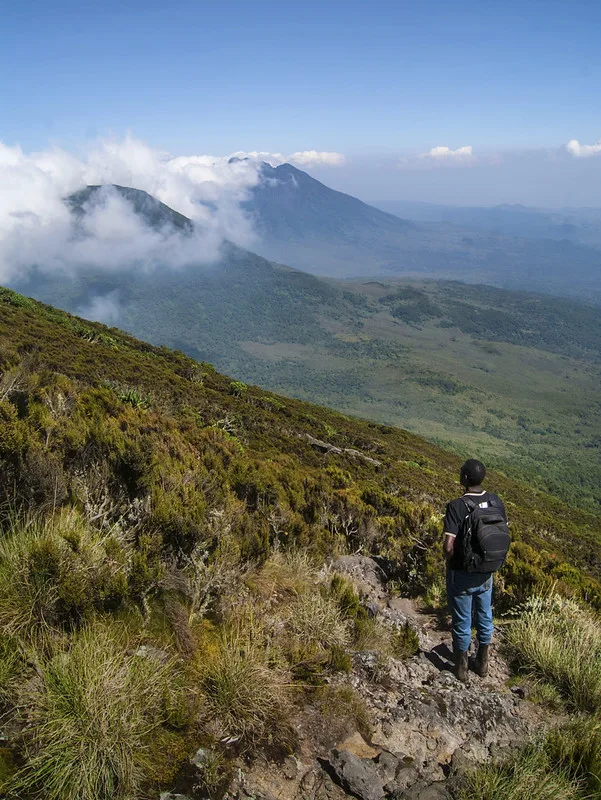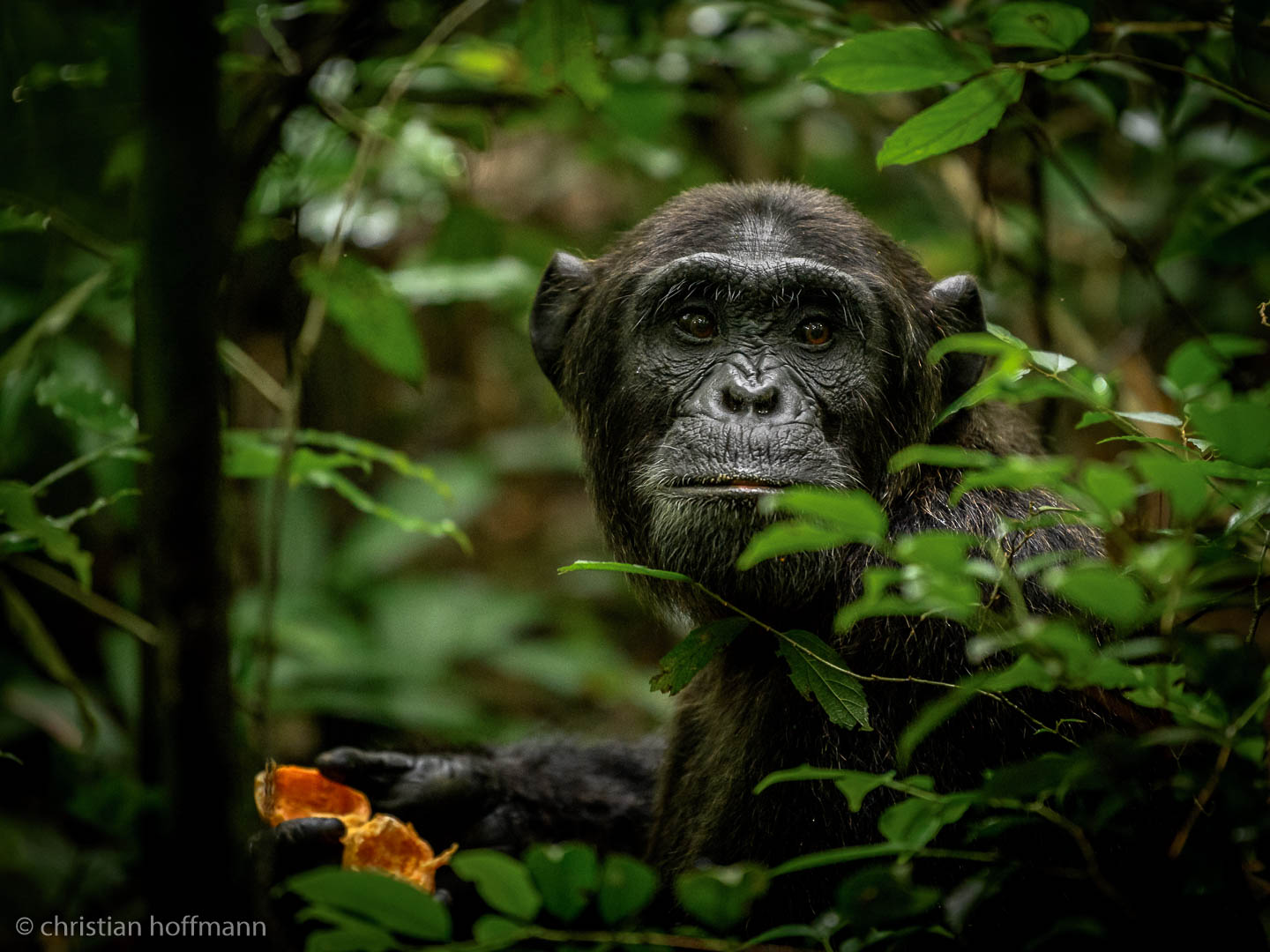virunga ranges and water catchment
The two largest lakes in Africa are the sources of two of the continent’s most powerful rivers. As the Nile River begins its journey from Lake Victoria, the Congo River is formed by Lake Tanganyika. But this geographical pretension doesn’t take into account the hundreds of smaller streams that drain down from the neighboring hills and mountains, which feed both large lakes. Rwanda is the birthplace of a lot of these.
In the saddle region between the three mountains of Karisimbi, Mikeno, and Visoke, there is a large wetland. Approximately twenty minutes to the west of the Karisoke field station lies a gentle rise that divides the summing hummock. At this point, a grassy channel, eighteen inches wide, collects the clear waters of the Virunga and channels them towards lakes Tanganyika and Kivu, then out into the Lualaba River and finally into the powerful Congo.
Twenty feet apart, a similar channel develops into a torrent that grows in magnitude and force as it winds its way eastward through the camp. As they travel, the Susa, Mukungwe, Nyabarongo, and Akagera Rivers join forces and eventually flow into Lake Victoria. From there, the last four thousand miles of water make their way down the Nile and into the Mediterranean Sea.
Camp creek was more than just a topographical oddity; it was our very survival. It supplied the Virungas with a reliable water supply, since it was fed by the Visoke and Karisimbi rivers. Large swaths of the park were without surface water even after continuous rainfall since the water soon seeped underground due to the porous rocks and lava rock formations.
 Any area of the park with stagnant water that did not flow was questionable from a health perspective. Camp brook, which flowed about thirty feet from our cabin, had clean waters that we could drink untreated over most of the year save the driest part of the year.
Any area of the park with stagnant water that did not flow was questionable from a health perspective. Camp brook, which flowed about thirty feet from our cabin, had clean waters that we could drink untreated over most of the year save the driest part of the year.
As the most recent rainfall transformed camp creek into a raging torrent of churning, whirling white water, the stream’s nature may change in the wet season in as little as an hour. It was a recurring dream to ride a tube down its rumbling waterfalls at high water, confined in a stony passage no wider than 10 feet. Unfortunately, the water was only little warmer than freezing, and we were without a tube.
There was a time when the Virungas didn’t care about weather reports. Always damp and chilly. the two descriptors disguised a huge lot of variety, however. Lows of 5 degrees Fahrenheit on a clear night at 10,000 feet drove the temperature down to freezing, while highs of 10 degrees on an unusually bright day caused a rapid undress as the thermometer got close to 70 degrees.
We were quite aback to hear upon arrival that they has no dependable method for recording meteorological data, except for a little plastic rain gauge concealed among some trees and a thermometer from a department shop fastened to a window of Dian’s hut.
A professional high-volume rain gauge and a min-max thermometer that recorded daily highs and lows were sent to us by Rwanda’s bureau meteorologique in response to Bill’s request for improved equipment. Karisoke became a part of contemporary meteorology, Rwanda acquired its sole high-elevation rain forest monitoring station, and they were made acutely aware of how chilly and rainy it really was every day with their installations in the right places.
ITS DRAMATIC ASCENT INCLUDES During our stay at Karisoke, the camp stream never flooded the main residential area due to its steep banks. Our environment was always a swamp, so it wasn’t necessary. Starting at the point where the Nile and Congo rivers split less than one mile west of camp, the whole saddle region was a wide, gently sloping marsh.
While some of its waters flowed quickly via the creek, the majority moved more slowly as a sheet of water that was almost frozen as it moved gradually. Located in the upper marsh, near the saddle’s eastern side. However, being here brought us even closer to the Visoke slopes, where an unchanneled tributary stream was regularly seeping over the station in an effort to join the camp stream.
The preservation of its natural habitats was a major selling point for karisoke. Large sections of mush remained covered with grasses, sedges, and the 0ccupational alpine lobelia that had been washed down from the slopes as seeds or seedlings since no one had bothered to drain or channel them.
In the virungas, dense thickets of senecio bushes, purple-crowned thistle, and hundreds of yellow-flowered hypericum seedlings (a cousin of St. John’s wort that matures to be a tree) may be found on higher land.
A series of grassy meadows and natural springs served to divide them. Hagenia abyssinica, in its gigantic shapes, towered over everything. These trees are at their largest in the vicinity of Karaisoke, where they reach about 100 feet in height and six feet in diameter at the base. These extraterrestrial beings appear to have been created by Dr. Seuss.


